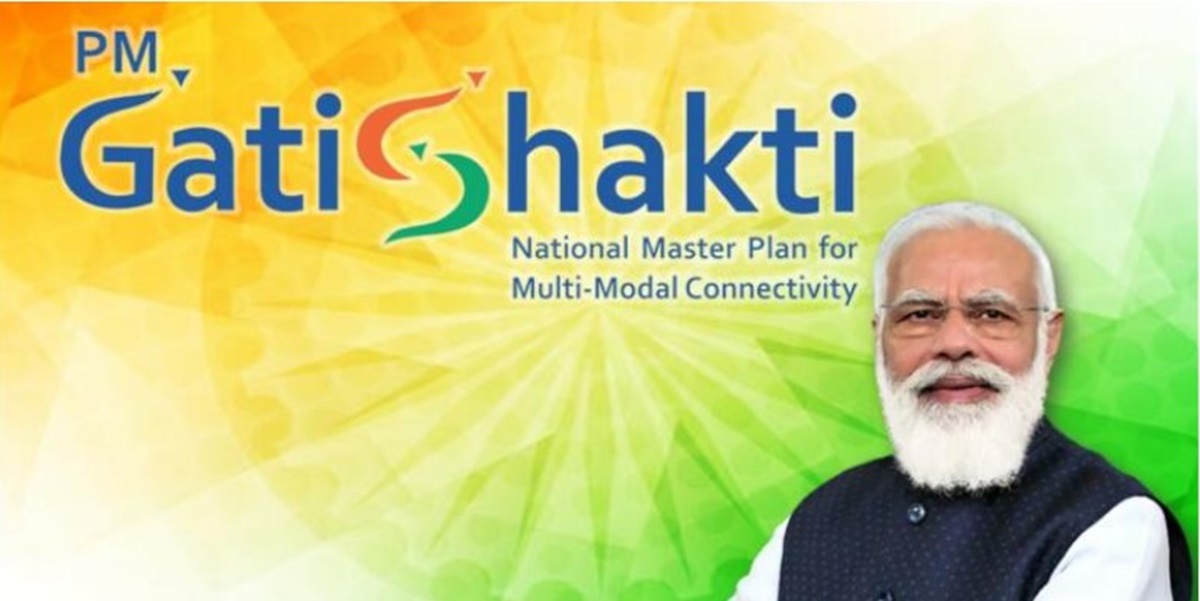The PM GatiShakti National Master Plan (NMP) for multimodal connectivity, launched by Hon’ble Prime Minister Narendra Modi on 13th October 2021, completes three years having achieved significant milestones in transforming the country’s infrastructure landscape.
With its vision to bring synergy across Ministries/Departments, and States/UTs, the PM GatiShakti has successfully laid the groundwork for seamless, multi-modal connectivity and accelerated economic growth. The PM GatiShakti has redefined how India plans and executes large-scale infrastructure projects. By harnessing geospatial data from 44 Central Ministries and 36 States/UTs, the platform has significantly improved inter-ministerial coordination and streamlined project execution.
PM GatiShakti has integrated 44 Central Ministries and 36 States/UTs with more than 1600 data layers, making it a crucial tool for planning and executing infrastructure projects. To date, over 200 big-ticket infrastructure projects have been evaluated by the Networking Planning Group (NPG) from the perspective of the principles of the PM GatiShakti viz. integrated planning & development of multimodal infrastructure, last-mile connectivity to economic and social nodes, intermodal connectivity, enhanced logistics efficiency and synchronised implementation of projects.
Social Sector Impact: Extending the PM GatiShakti to the Social Sector Ministries, the focus is on increasing the usage of the PM GatiShakti for social development, identifying social gaps (schools, hospitals, anganwadis) using, and developing applications and planning tools for capturing data. This has enabled better infrastructure planning in essential areas such as primary healthcare, education, postal services, and tribal development, ensuring that even remote and underserved areas are part of India’s infrastructure growth story.
PM GatiShakti State Master Plans (SMPs): All 36 States/UTs have developed the PM GatiShakti State Master Plan (SMP) portals, aligned with the PM GatiShakti National Master Plan platform to synchronise infrastructure assets and enhance regional development. This unified approach has helped States streamline their capital investment for accelerating infrastructure development. Over 533 projects have been mapped by States/UTs on the PM GatiShakti portal.
EXIM and Trade Facilitation: Aligned with the National Logistics Policy (NLP), the PM GatiShakti has been instrumental in addressing critical infrastructure gaps, reducing logistics costs, and improving India’s logistics performance. According to the World Bank’s ‘Logistics Performance Index Report (2023) India’s rank (38) has improved by six places from 44 in 2018.
Regional Workshops and Stakeholder Engagement: Following the spirit of cooperative federalism, over the last three years, five regional workshops have been conducted, covering all 36 States/UTs to facilitate knowledge sharing, best practices, and project demonstration by Central and States Governments. These engagements have played a key role in strengthening local adoption and ownership of the GatiShakti framework.
Driving Sustainable, Data-Driven Development: The PM GatiShakti’s data-driven approach is powered by GIS-based tools and a real-time monitoring system that enables faster and more informed decision-making. The platform ensures that projects are aligned with national priorities and completed on time, minimising delays and reducing cost overruns. This integration is key to meeting India’s Net Zero by 2070 commitments, as the platform promotes the use of green infrastructure and sustainable logistics solutions.
Training and Capacity Building: As the PM GatiShakti is a new initiative with an advanced GIS platform, DPIIT has undertaken the task to train officials for build their capacities. The PM GatiShakti National Master Plan (PMGS NMP) has seen significant progress in capacity building through the institution of courses and workshops. A course on the PM GatiShakti, available on the iGoT platform, has already been completed by over 20,000 officials. Additionally, all Central Training Institutes (CTIs) have integrated a course module on the PM GatiShakti into their regular officers’ training curriculum. The resource persons and master trainers from DPIIT and BISAG-N conduct regular sessions on the PM GatiShakti across various CTIs and ATIs, including institutions like Lal Bahadur Shastri National Academy of Administration (LBSNAA), Sardar Vallabhbhai Patel National Police Academy (SVPNPA), and Sushma Swaraj Institute of Foreign Service (SSIFS). There have also been approximately 150 interactive training sessions on the PM GatiShakti with Ministries/Departments, and States/UTs, engaging over 1,000 officials.
The government is also considering providing access to non-government users for the data (non-sensitive and shareable) relevant to the planning of the infrastructure and developmental activities by the sector. Such access to the data shall be provided in the most secure manner.








